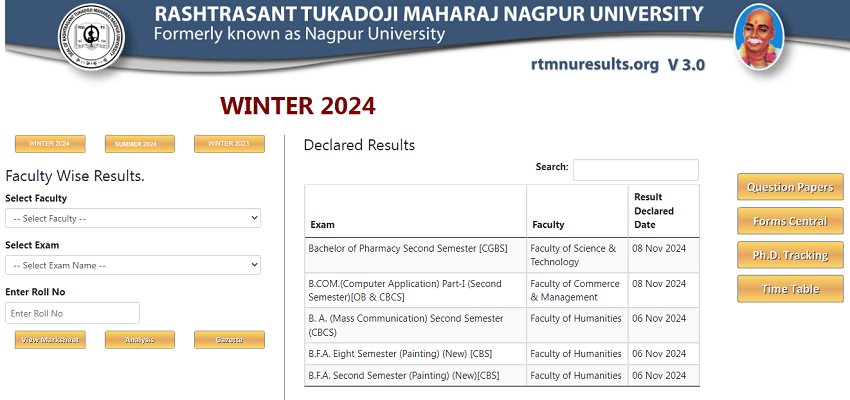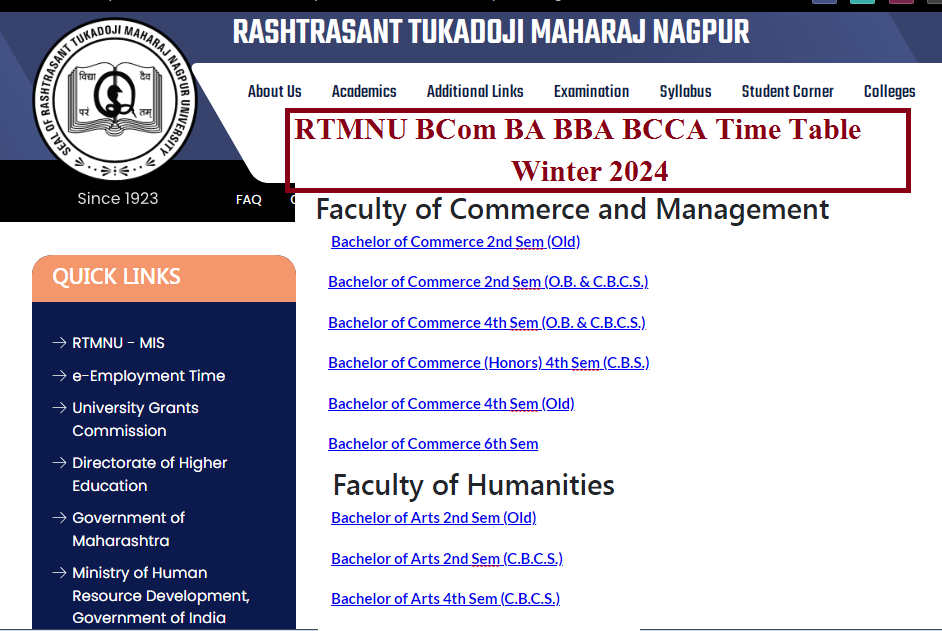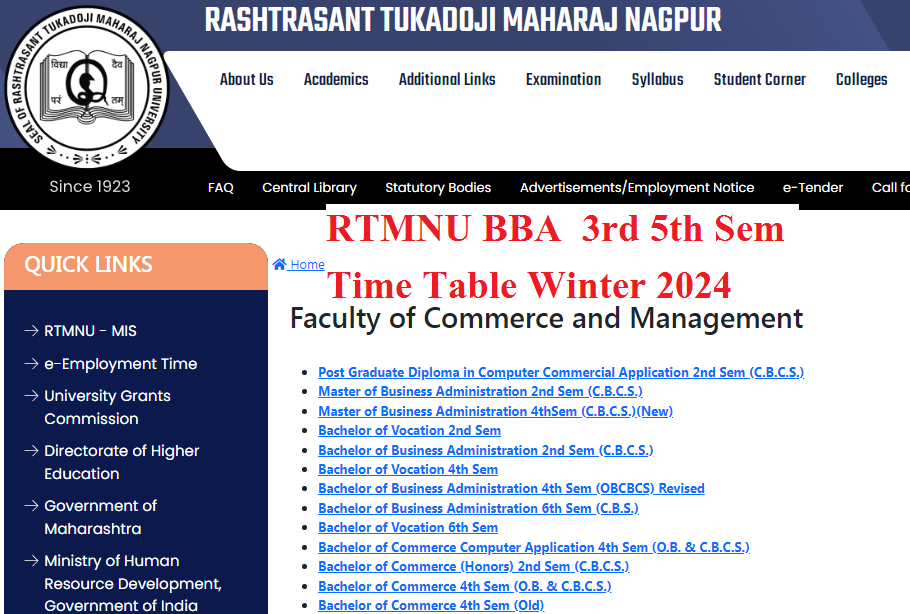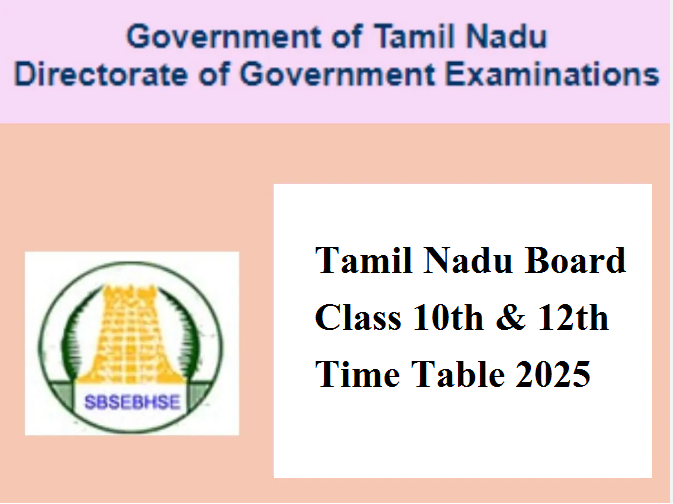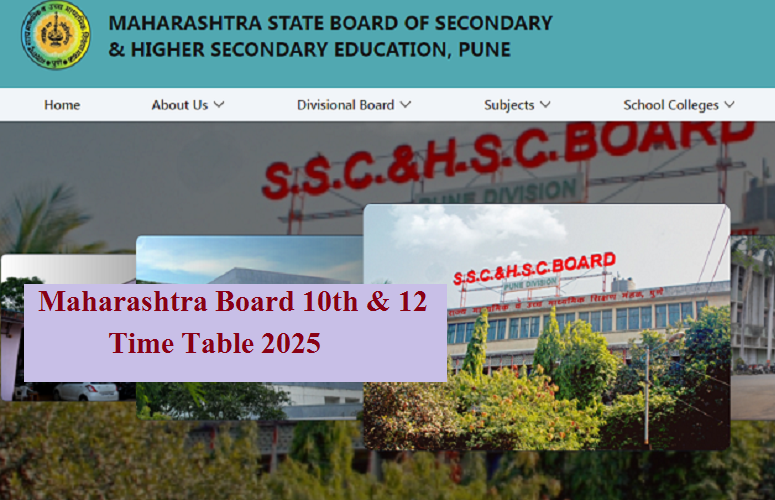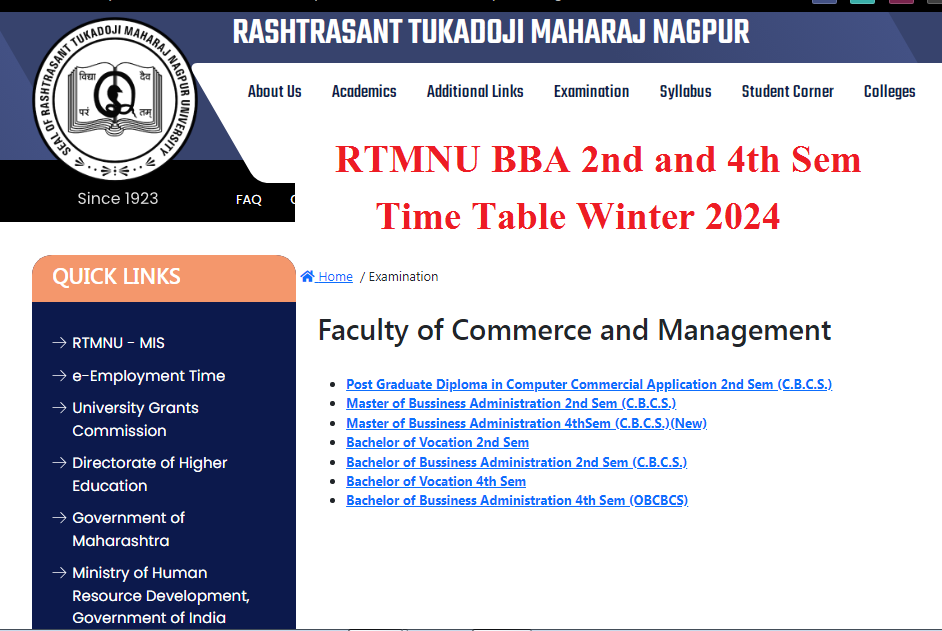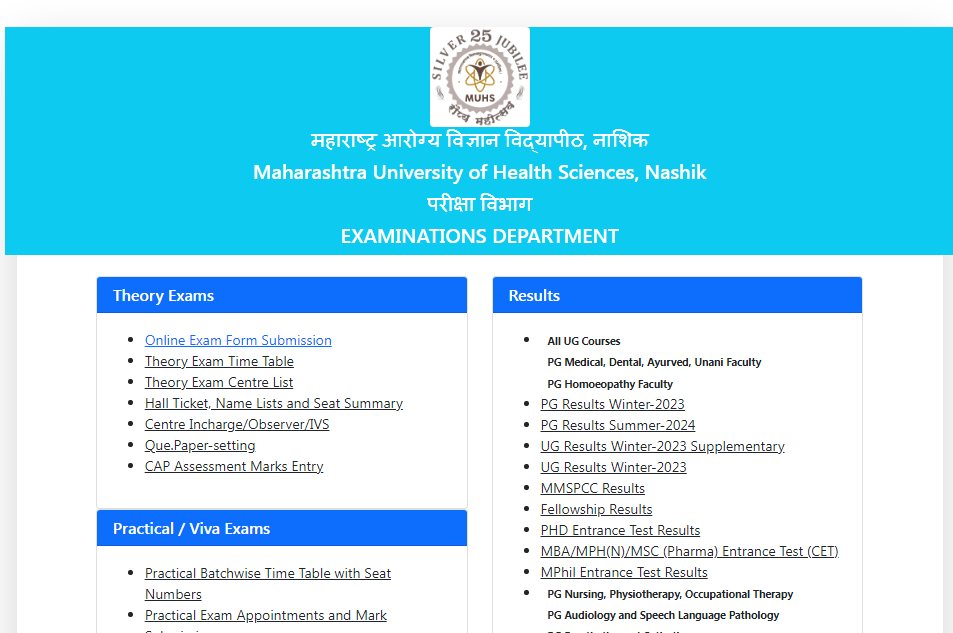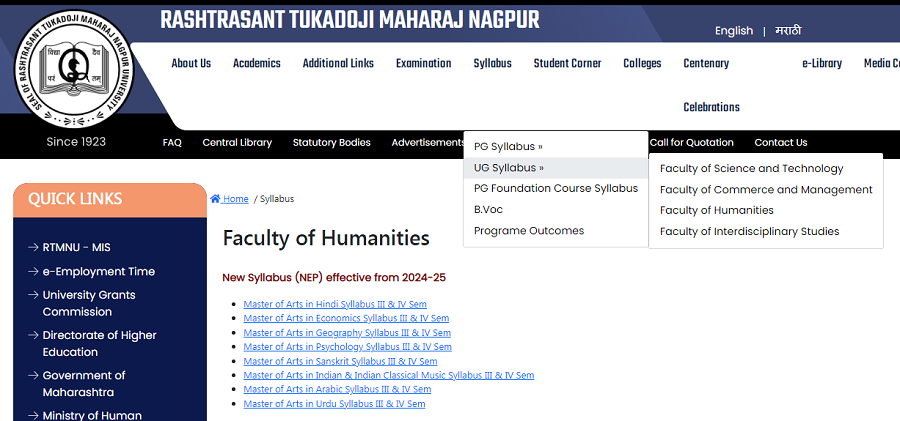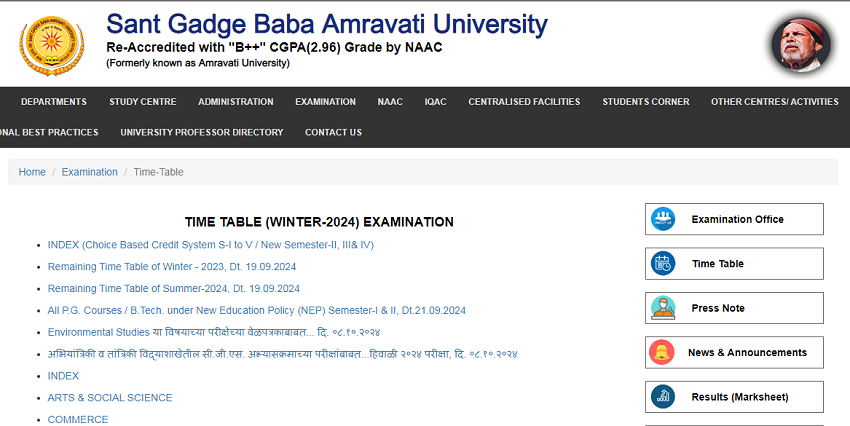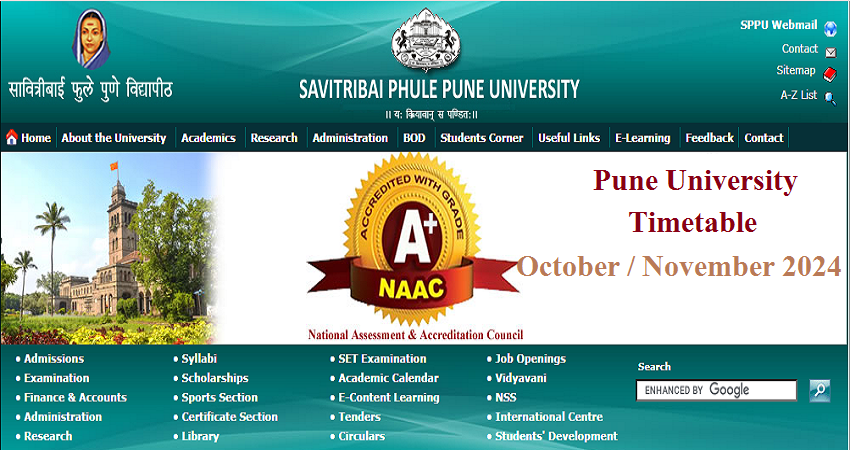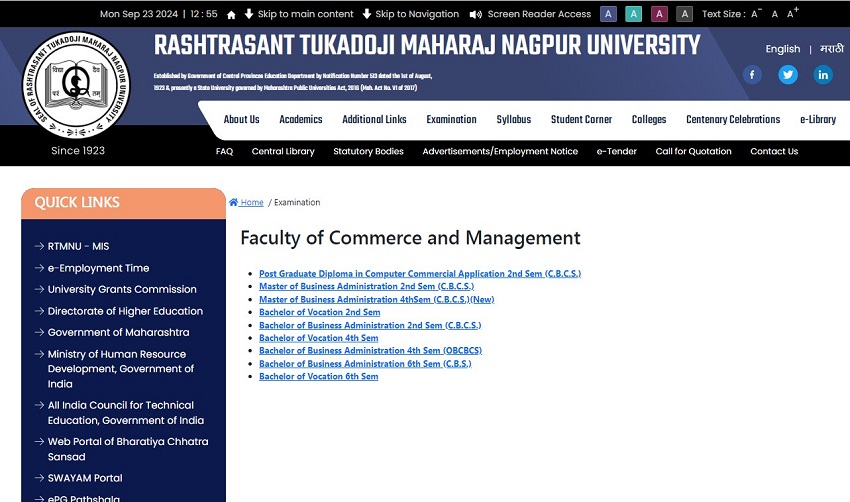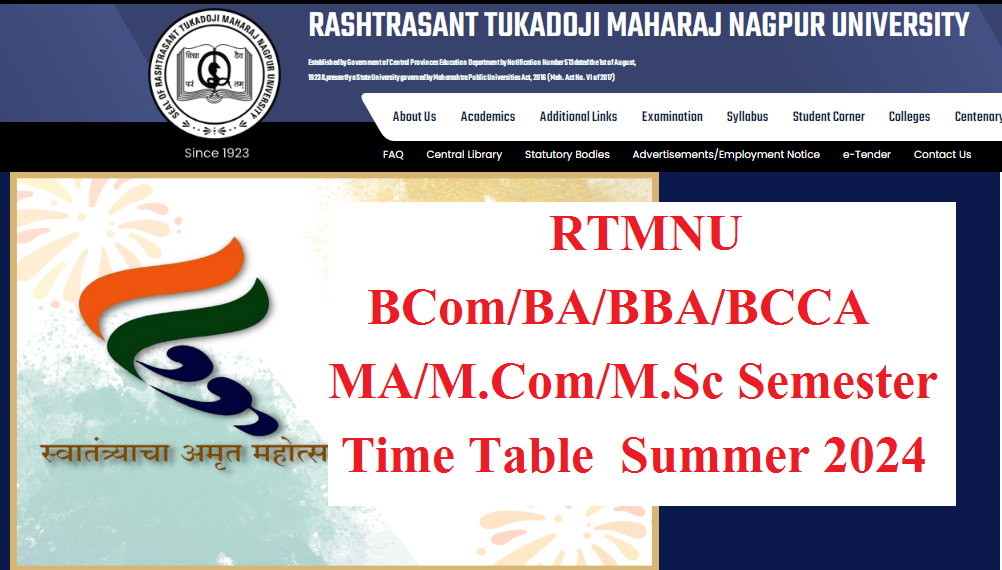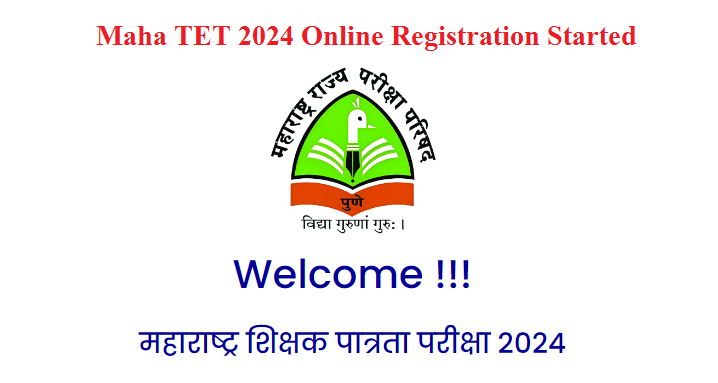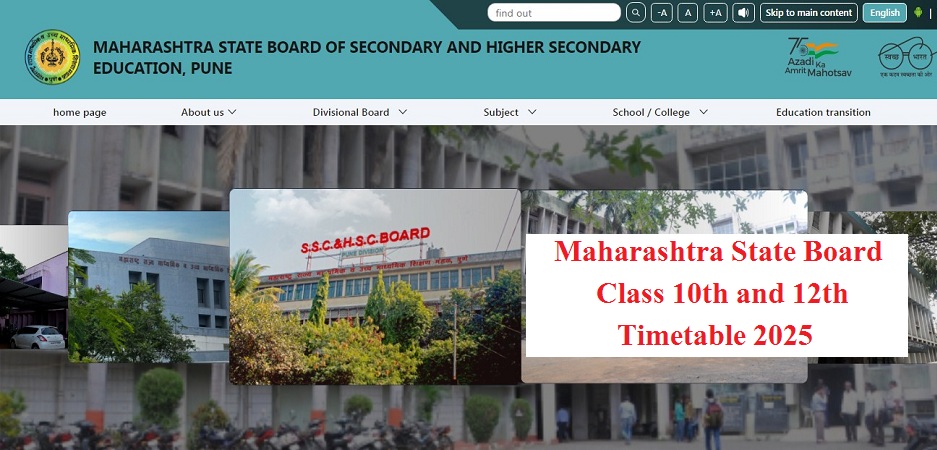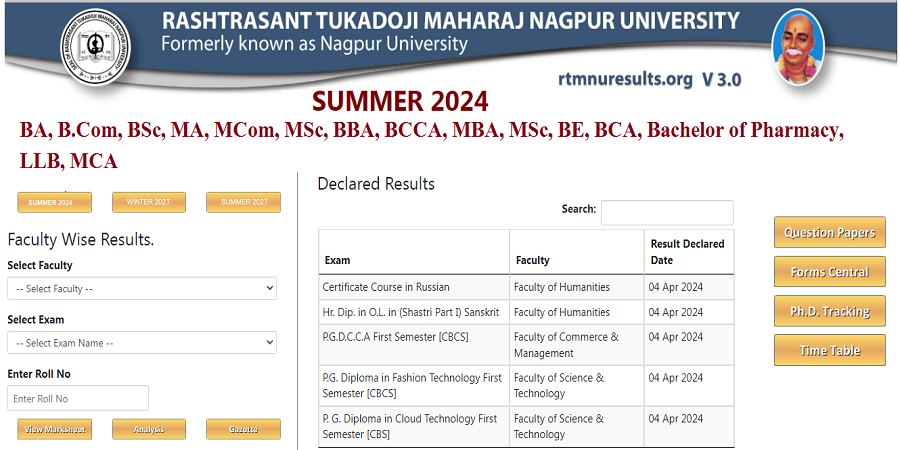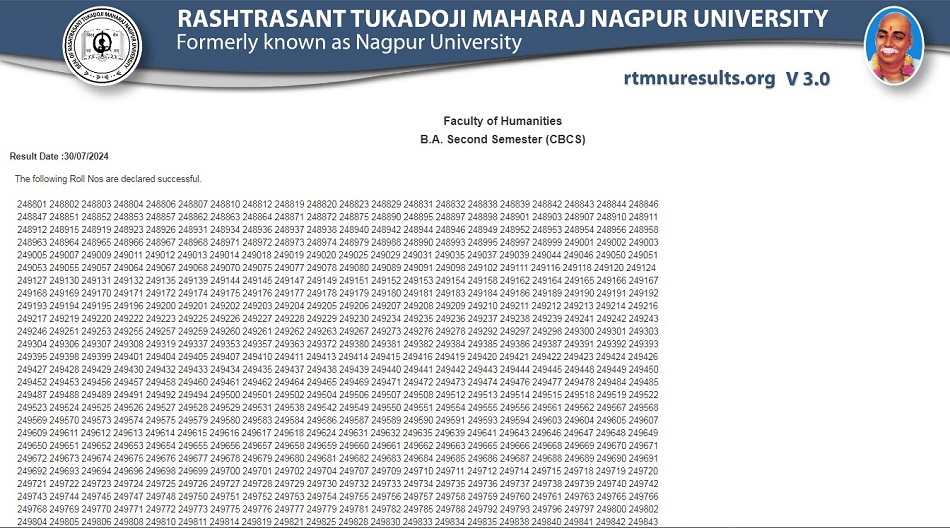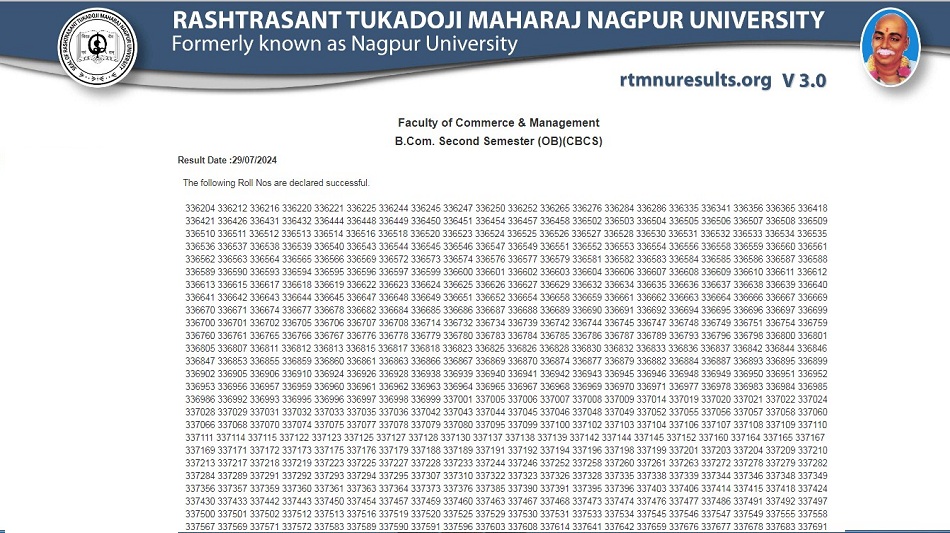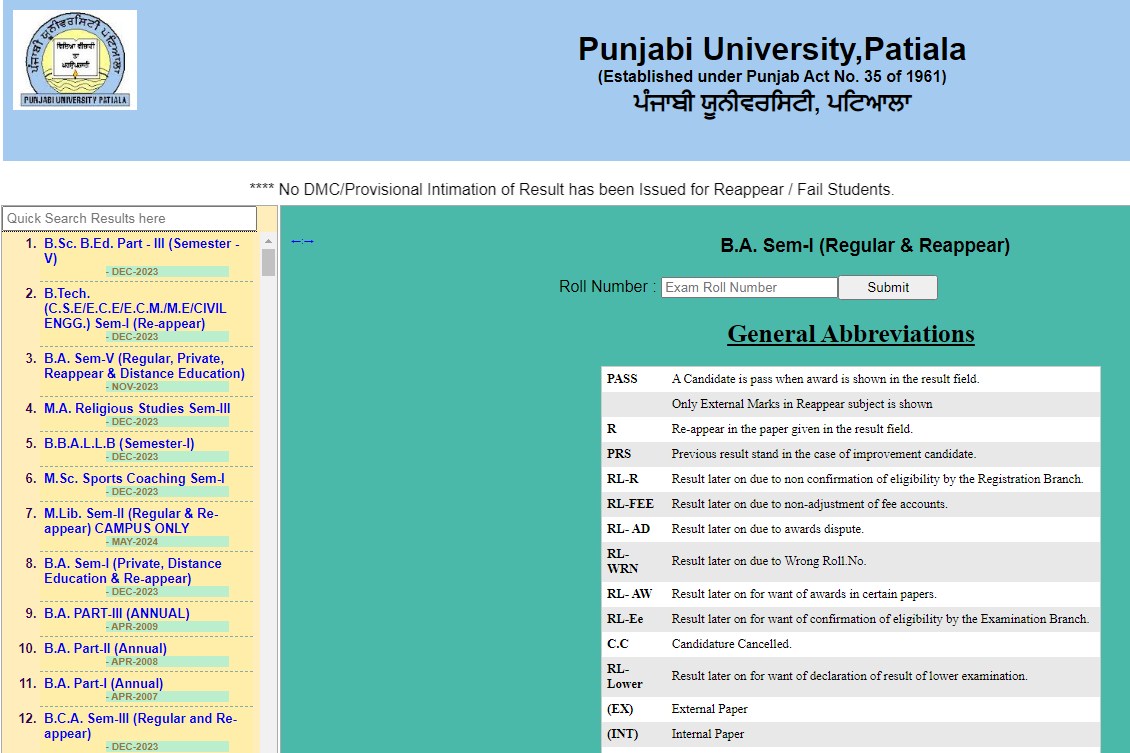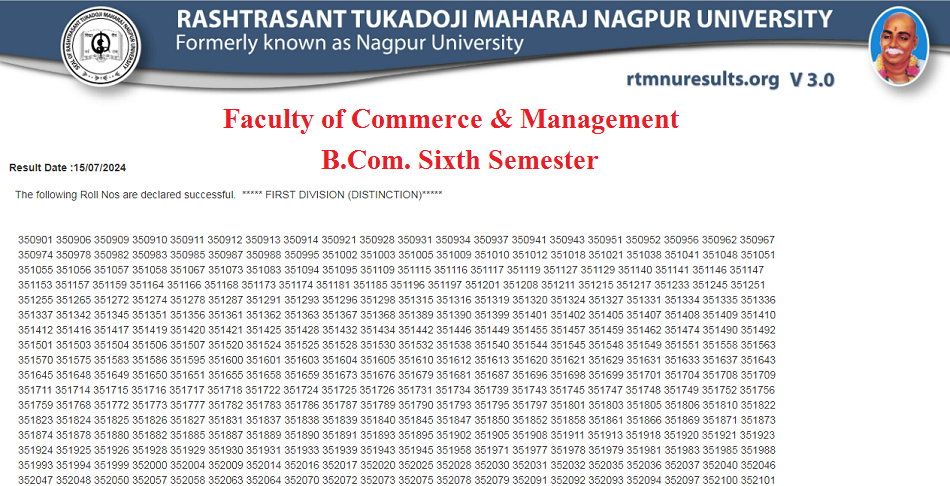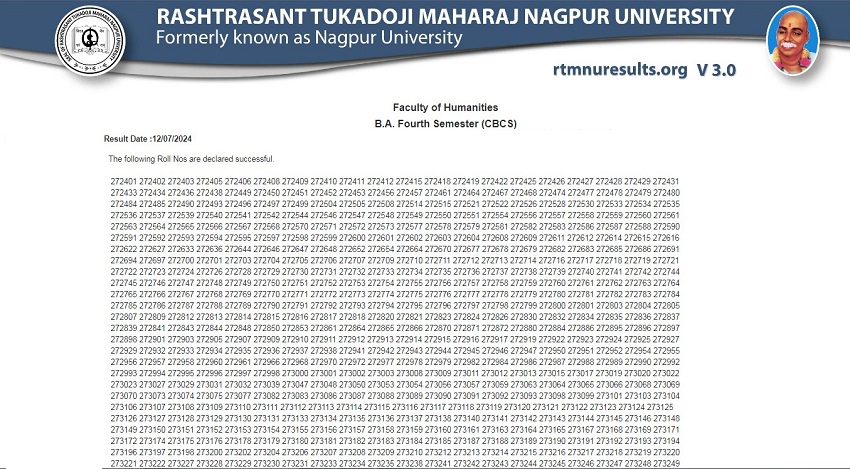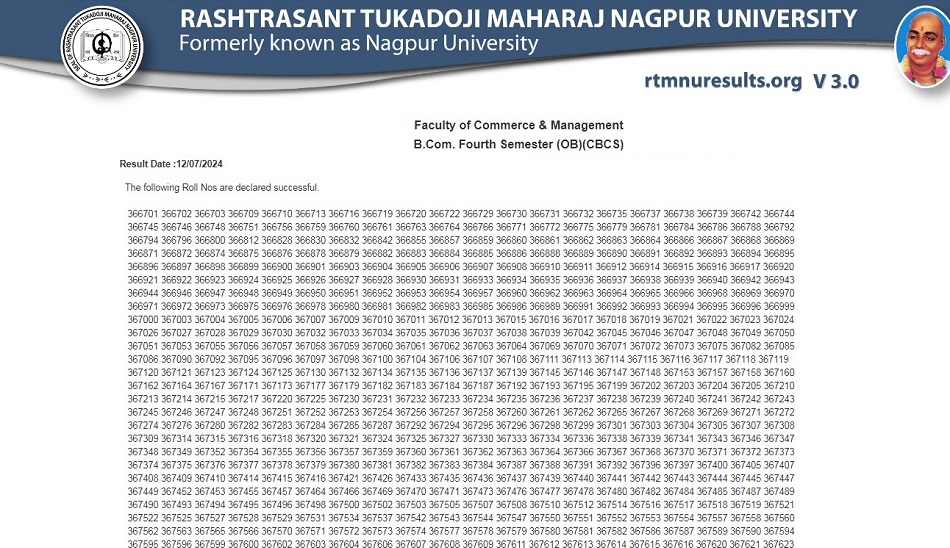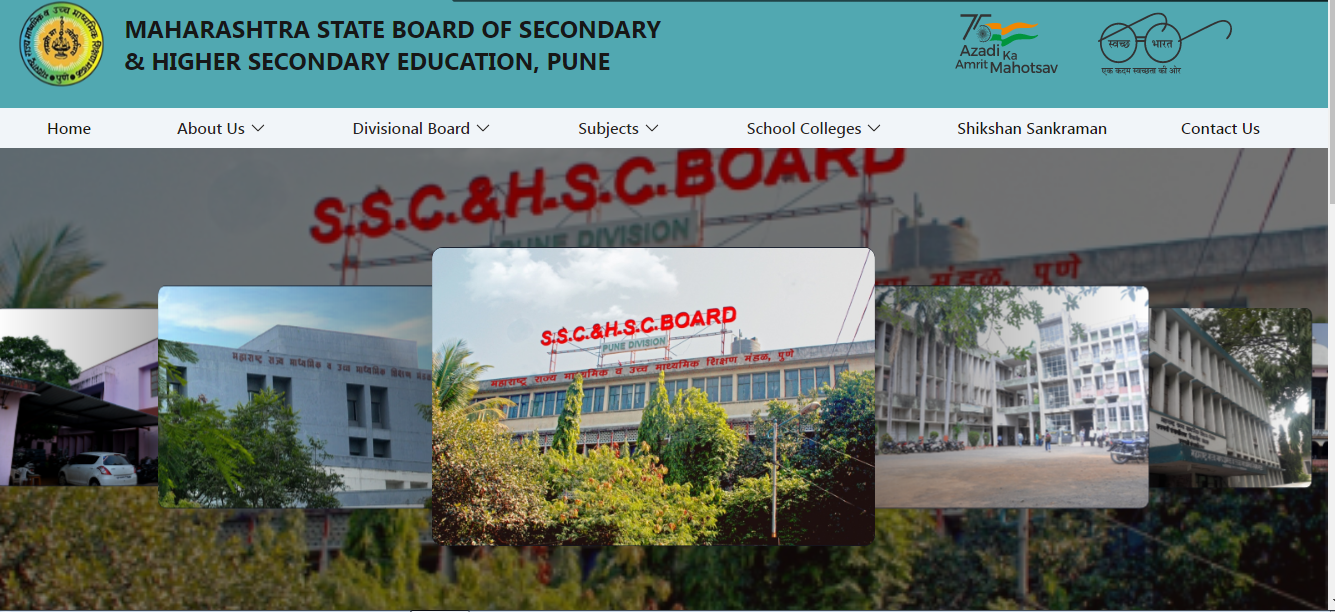RTMNU BCCA 3 Sem New Syllabus 2021 Download Here
RTMNU BCCA Sem 3 New Syllabus 2021
RTMNU BCCA 3 Sem New Syllabus 2021 | RTMNU BCCA Revised Sem 3 Syllabus 2021 | Nagpur University BCCA Syllabus Part 2 | RTMNU Second Year BCCA Syllabus BCCA
RTM Nagpur University BCCA Third Semester New Revised Syllabus is given below for Downloading. The students can Download the respective Syllabus from following given details. Just go through the given links & read the given syllabus carefully. Nagpur University Second Year New Semester Online Detail syllabus given below.
Read More : RTMNU Result -2021 BE Result Download
Read More : RTMNU- Summer 2021 Time Table (Released) Download PDF
Read More : RTMNU Result -2021 Check here to Download UG and PG Results
Read More : RTMNU -Online Exam link 2021 Released
Read More : RTMNU Time Table 2021
Read More :RTMNU -Online Exam link 2021
Read More : RTMNU Revised Syllabus 2021

Semester – III
Paper I – Environmental Studies
UNIT – I
Environment, Environment Studies, Need for public Awareness, Environmental Degradation, Shelter Security, Economic Security, Social Security, Effects of Housing on Environment , Effects of Industry on Environment. Natural Resources- Introduction, Types of Natural Resource, Forest Resources, Water Resources, mineral Resources, Energy resources, Land Resources, Conservation of Natural Resources, Sustainable Lifestyles, Biogeochemical Cycle.
UNIT – II
Ecosystem- Introduction to Ecology and Ecological Succession, Ecosystem, Food Chain, Ecological Pyramids, Types of Ecosystems, Forest Ecosystems, Aquatic Ecosystems, Grassland Ecosystem, and Desert Ecosystem. Biodiversity and its Conservation- Biodiversity, Values or Benefits of Biodiversity, Biogeographic Zones of India. Threats to Biodiversity, Human –Conflicts, Conservation of Biodiversity.
UNIT – III
Environmental Pollution ,Introduction, Public Health Aspects, Air Pollution, Land Pollution, Soil Pollution, Marine Pollution, Water Pollution, Noise Pollution, Thermal Pollution, Solid Waste Management, Role of Individuals in Pollution Prevention, Disaster Management.
UNIT – IV
Social Issues and the Environment- Introduction, Sustainable Development,Urbanization, Water Conservation, Resettlement and Rehabilitation of People ; Its Problems and Concerns, ACTs for Environmental Protection, Carbon Credits, Initiatives and Roles of Nongovernmental Organization (NGOs) in Environmental Protection, Issues Involved in Enforcement of Environmental Legislation . Environment and Human Health, Environmental Education, Role of Information Technology in Environment and Human Health.
Text Book
1. Shashi Chawla , Environmental Studies, McGraw-Hill.
Reference Books
1. Dr. D. K. Asthana, Dr. Meera Asthana ,Environmental Studies, S. Chand.
2. Dr. K. Mukkanti, Environmental Studies, S. Chand.
3. Dr. D. D. Mishra,Fundamental Concepts in Environmental Studies, S.Chand.
4. Benny Joseph, Environmental Studies, McGraw Hill Education.
____________________________________________________________________________________
Semester – III
Paper II– Business Economics
UNIT I
Introduction: Economics and Business Economics– Meaning, Nature, concept & Scope of Business economics. Basic problem of an Economy and Role of price Mechanism – Basic problems of an economy, Classification of Economy, Its features, advantages and disadvantages. Free Enterprise Economy: Meaning & Features. Theory of utility : Theory of Consumer Behavior – Nature of Human wants, Utility Analysis – Meaning and definition of utility, Concepts of Marginal Utility, Total Utility, Cardinal and ordinal approach of utility(Difference), Features of Utility, Law of diminishing Marginal utility.
UNIT II
Theory of Demand and supply -Theory of Demand: Concept of Demand, Law of Demand-Meaning, Definition, Assumptions & Exceptions. Elasticity of Demand – Meaning, Types and Factors affecting Elasticity of Demand. Demand Forecasting – Meaning, Definition, Importance and scope of Demand Forecasting, Methods of demand forecasting. Supply Analysis – Supply: Meaning, Determinants and functions of Supply. Law of Supply, Elasticity of Supply: Meaning of Elasticity of Supply, Types of Elasticity of Supply
Unit – III
Theory of Production and cost – Theory of Production: Meaning of Production, Factors of production, Concepts of Total Product, Average product and Marginal Product, Production Function, Short Run Production Function: Law of Variable Proportion, ISO Quant Curve, Long Run Production Function, Law of Returns to Scale. Theory of Cost – Meaning of Cost, Cost Concepts, Cost Function, Concepts of total
Cost ,Average Cost and Marginal Cost, Short Run Average Cost Curves, Long Run Cost Curve, Economies and Diseconomies of Scale
UNIT IV
Market Structure And Pricing theory- Market Structure: – Meaning of market, Classification of Market, Concepts of Total revenue, Average revenue and Marginal revenue, Market Structure – Concept ,Features types. Price – Cost and Output Determination under Different types of markets- Perfect Competition, Monopoly, Monopolistic Competition, Equilibrium of firms under different market structures in short run and long run. Price Discrimination in monopoly and oligopoly. Kinked demand curve.
Text Book
1. D. N. Dwivedi, Essentials of Business Economics, Vikas Publishing House Pvt.Ltd.
Reference Books
1. David P. Doane, Lori E. Seward, Applied Statistics in Business and Economics, McGraw-Hill.
2. Amit Kumar Upadhyay, Principles of Economics, Vikas Publishing House Pvt. Ltd.
3. P. K. Mehta, Business Economics, Taxmann.
4. Michael Mandel, Economics The basics, McGraw-Hill.
5. SudipChaudhuri, AnindyaSen, Economics, McGraw-Hill.
6. Geetika, PiyaliGhosh, Purba Roy Choudhury, Managerial Economics, McGrawHill.
____________________________________________________________________________________
Semester – III
Paper III – Visual Basic Programming
Unit – I
Introduction to Visual Basic –Advantages of Visual Basic, Features of Visual Basic. Visual Basic Window Components – Menu Bar, Standard Toolbar, Project Explorer Window, Form Layout Window, Properties Window, Toolbox, Code Editor Window, Object Browser, Working With Forms – Extension & With Function of the File, Properties, Events and Method of the Form. Using The Controls Of Visual
Basic–Label Control, Commandbutton Control, Textbox Control, Option Button Control, Frame Control, Checkbox Control, Listbox Control, Combobox Control, Image Control, Scroll Control, Picture Control, sing Timer Control, Drivelistbox Control, Dirlistbox, Filelistbox Control.
Unit – II
Basic Programming Fundamentals– Scope of Variables, Operators, Decision Structure, Loop Structure, Arrays, control array. Working With Procedure, Functions Procedure, Functions, Modules Menus – Creating Menus, Creating Popup Menu. Working With Custom Controls – Imagelist Control,Imagecombo Control, Treeview Control, Listview Control, Toolbar Control, Statusbar Control.
Unit – III
Creating MDI Applications – Features of Child Form, Database Handling – Creating the Database, Accessing the Database Using ADO Data Control.Working With Advance Data Controls – Datalist Control, Datacombo Control, Datagrid Controls, Setting The Properties Of The Datagrid Control, Mshflexgrid Control,
Unit – IV
Debugging Techniques – Error handling : Types of errors. Debugging, tools for debugging,handling runtime errors.Working with Data Environment-Data Environment and Data Report, Data Environment designer adding connection & commands Data reportcontrols, creating & printing reports.
Text Book
1. Soma Dasgupta, Visual Basic – to Advance, BPB Publications.
Reference Books
2. Mohammad Azam, Programming with Visual basic, Vikas Publishing House Pvt. Ltd.
3. Mike Mcgrath, Visual basics in Easy Steps, McGraw-Hill.
4. Michael Vine, Microsoft Visual Basic Programming, PHI.
5. Evangelos Petroutsos, Mastering Visual basic, Wiley India Pvt. Ltd
________________________________________________________________________________
Semester – III
Paper IV– Database Management System
UNIT – I
Introduction: Concept of the System, Types of Decisions, Information System, Classification of information System, Conventional File Processing System, Database System, Components of Database Management System, Economic Justification of Database Approach. Database Concepts: Introduction, Data, Information, Metadata, Terminologies of Files, Association between Fields, Association between Files (Record Types), File Organization.
UNIT – II
Data Models: Introduction, Classification of Data Model, Entity Relationship Model. Database Design: Introduction, Steps of Database Design, Normalization, Case Problem, Data Volume and Usage Analysis, Integrated Case Study-Database Design for Academic institution. Implementation Design: Introduction, Implementation Design,
UNIT – III
Structured Query Language – I: Table fundamentals, viewing data in the tables, Eliminating duplicate rows when using a select statements, sorting data in a table, creating a table from a table, inserting data into a table from another table, delete operations, updating the contents of a table, modifying the structure of tables, renaming tables, truncating tables, destroying tables, creating synonyms.
UNIT-IV
Structured Query Language – II: Data Constraints, Types of data constraints, defining different constraints on a table, computations done on table data, ORACLE functions, Date conversion functions, Data functions, Miscellaneous functions, Grouping data from tables in SQL, Subqueries, Joins, concatenating data from table columns, using the UNIONS, INTERSECT and MINUS clause.
Text Books
1. R. Panneerselvan, Database Management Systems, PHI Publication.
2. Ivan Bayross, SQL, PL/SQL, BPB Publications.
Reference Books
1. Silberschatz, Korth, Sudarshan, Database System concepts, McGraw-Hill.
2. Gupta, Database Management Systems, McGraw-Hill.
3. Alexis Leon, Mathews Leon, Database Management System, Leaon Vikas.
4. Mike Mcgrath, SQL in Easy Steps, McGraw-Hill.
5. Dr. P. S. Deshpande, SQL & PL/SQL for Oracle 11g, Dreamtech


